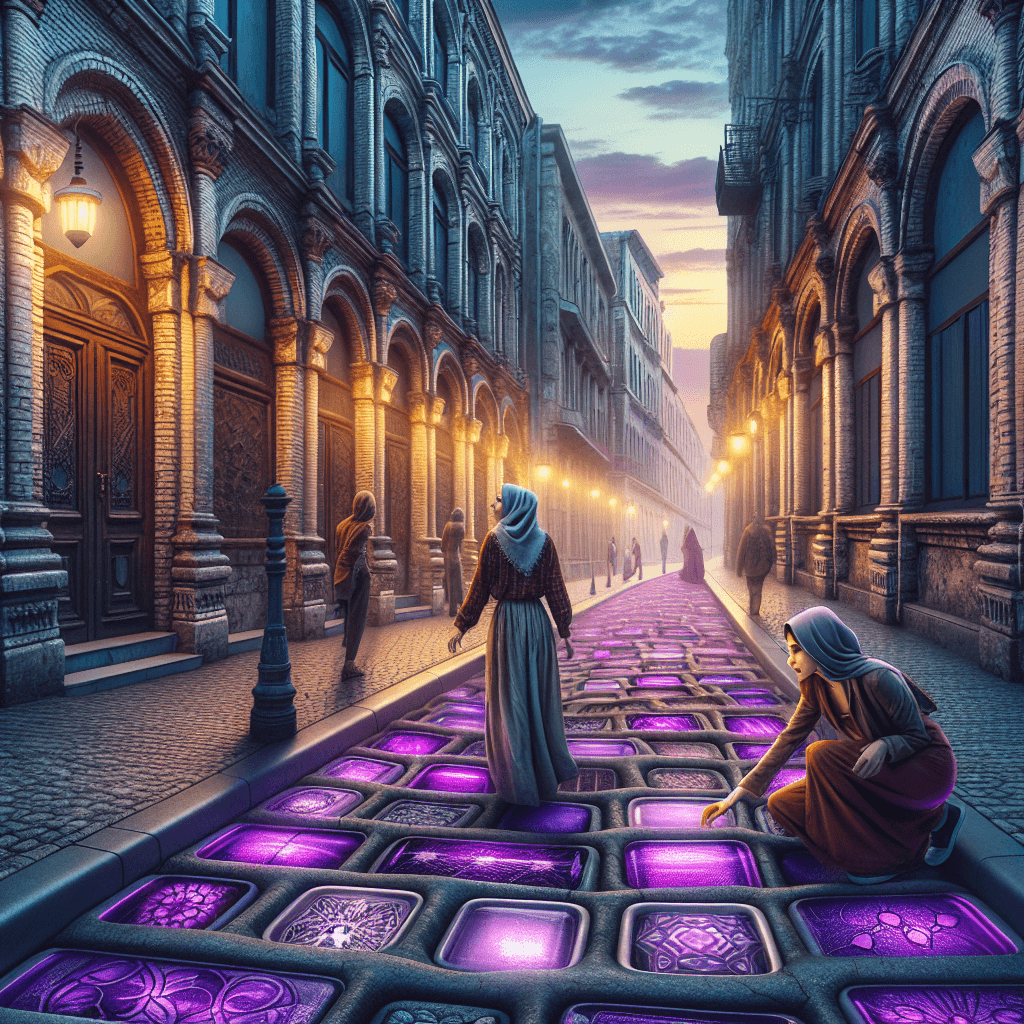Why are some old city sidewalks embedded with mysterious purple glass blocks
Those mysterious purple glass blocks weren't always that color; they're actually windows that once illuminated a forgotten world hidden right beneath your feet.


Too Long; Didn't Read
TLDR: The purple glass blocks are sidewalk skylights used to light up basements before electricity was common. They were originally clear, but a mineral called manganese mixed into the glass to decolorize it has slowly turned purple after decades of exposure to the sun's UV rays.
Blog Post Title: The Urban Mystery Solved: Why Are Some Old City Sidewalks Embedded with Mysterious Purple Glass Blocks?
Have you ever walked down a historic city street and noticed them? Small, thick squares of glass, often in a grid-like pattern, embedded directly into the concrete. While some are clear or cloudy, others possess a striking, almost magical, purple hue. These aren't just random decorative flourishes or misplaced jewels; they are fascinating relics of a bygone era with a story rooted in innovation and accidental chemistry. These "purple gems" are a direct link to a time before our cities were powered by electricity. This post will uncover the true purpose of these glass blocks and explain the scientific reason behind their mysterious purple transformation, revealing a piece of urban history hidden in plain sight.
From Clear to Purple: The Secret of Vault Lights
Those glass blocks you see are not just glass; they are functional architectural elements known as vault lights or pavement lights. Before the widespread adoption of affordable electric lighting in the early 20th century, illuminating the dark, cavernous spaces beneath sidewalks—basements, cellars, and utility vaults—was a significant challenge.
The ingenious solution was to embed light-refracting glass prisms into the sidewalk. These vault lights acted as miniature skylights, capturing ambient daylight from the street and channeling it downward, naturally illuminating the subterranean levels. This innovation was crucial for businesses in dense urban centers, allowing them to use their basements for workshops, storage, and even retail space without the constant expense and fire hazard of gas lamps. They were a common feature in cities like Seattle, New York, Chicago, and London from the late 1800s through the 1930s.
The Accidental Color Change: A Lesson in Chemistry
Here is where the mystery of the purple color is solved. The glass used for these vault lights was never intended to be purple. In fact, manufacturers went to great lengths to make it as clear as possible.
The key lies in a chemical ingredient: manganese dioxide.
- The Problem: The sand used to make glass in that era naturally contained iron impurities, which gave the finished product an undesirable greenish or bluish tint.
- The Solution: To counteract this, glassmakers added manganese dioxide to the mixture. Acting as a "decolorizer," the manganese would neutralize the green color, resulting in a clear, crystal-like glass.
- The Unintended Consequence: While manganese solved one problem, it created another over the long term. When exposed to the ultraviolet (UV) rays of the sun for decades, the manganese undergoes a chemical reaction called solarization. This slow photo-oxidation process causes the manganese to change properties, giving the glass a distinct amethyst or purple tint.
The beautiful purple color we see today is, therefore, an accidental and beautiful chemical signature of age—a direct result of nearly a century of sun exposure.
Illuminating the Past: The Rise and Fall of Sidewalk Prisms
The heyday of vault lights was relatively short-lived. Their popularity peaked in the decades surrounding the turn of the 20th century, a time of rapid urban expansion. Companies like the "Luxfer Prism Company," for which famed architect Frank Lloyd Wright even designed some prism tiles, specialized in creating these light-directing systems.
However, the rapid advancement and affordability of the tungsten-filament light bulb in the 1920s and 1930s rendered them obsolete. Reliable, on-demand electric light was far more practical than relying on the sun. Over time, many of these vault light systems fell into disrepair. As they cracked or became slippery when wet, cities began removing them or paving them over with concrete for safety and ease of maintenance, making the surviving examples even more special.
Conclusion
So, the next time you find yourself walking through an older section of a city, take a moment to look down. Those mysterious purple glass blocks are not just curiosities; they are historical artifacts. Each one is a testament to a time of pre-electric innovation, a small-scale skylight designed to bring light to the darkness below. Their beautiful purple hue is a happy accident of chemistry and time, a solar-powered transformation that tells a story of industry, invention, and the ever-changing landscape of our urban environments. They are a quiet reminder of the history that lies, quite literally, beneath our feet.


